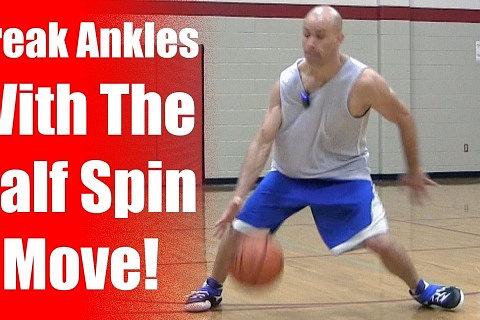Home »
Misc »
How to dribble a basketball without looking down
How to dribble a basketball without looking down
Ultimate Hoops - Tips to improve your basketball dribbling
downloadable .pdf
Dribbling is a key skill to master in the game of basketball. The better you can dribble the more opportunities you have for you and your teammates to score. A great goal to have is to be able to dribble the ball with either hand without looking down at the ball. Keeping your head up gives you the ability to see where your teammates are on the court and look at what the defense is doing.
Step 1: Dribbling BasicsA. Low stanceSpread your feet should-width apart. Bend your knee, drop your hips back and get in a low stance. Make sure your body is balanced giving you the opportunity to move quickly or change directions. Avoid bending at your waist.
B. Bounce the ballStart with your dominant hand first and pound the ball into the ground, extending your arm and snapping your wrists to send the ball to the ground.![]() Each time the ball returns to your hand, don’t catch it, push back towards the ground. Placement of your bounce should be in front of your body slightly to the side of the foot that is on the same side of your body as the hand you are using. You want your dribble to be quick, steady, and controlled.
Each time the ball returns to your hand, don’t catch it, push back towards the ground. Placement of your bounce should be in front of your body slightly to the side of the foot that is on the same side of your body as the hand you are using. You want your dribble to be quick, steady, and controlled.
C. Use your fingertips, not your palmWhen you dribble it’s important to have good ball control. Using your fingertips gives you more control over the ball and the more control you have the less strength needed to keep it bouncing. Using your fingertips also allows you bounce the ball faster. Spread your fingers out across the surface of the ball for a wider, more even contact area. Try to keep the palm of your hand directly over the ball so it bounces up into your fingertips.
D. Ball height lowDo not bounce the ball too high, keeping your dribble low will improve your control but also makes it harder for the defense to steal it.
E: Protect the ballKeep the ball safe by using your body and your non-dribbling arm to keep the ball shielded from defenders. Keep your body between your defender and the ball, never dribble the ball on the same side of your body as the defender is on.
F. Dribbling equally well with both dominate and non-dominate handsA basketball player needs to develop dribble equally well with both hands. This increases their opportunities on offense and makes it harder for the defense to stop.
Step 2: Next StepsA. Keep your head upThis is important skill in basketball, you need to be able to look at the defense and also see where your teammates are on the court. Practice dribbling without looking at the ball.
B. Know the rulesKnow what you can/can’t do with the basketball while you are dribbling.
Traveling: Moving the ball without dribbling
Taking an extra step or shuffling your feet
Holding on to the ball while you walk or run
Moving or changing your pivot foot when stationary
Double Dribble: Two separate meanings
Dribbling with both hands at the same time
Dribbling, stopping your dribble, and then starting to dribble again
Carrying: Catching the ball with one hand and then continuing to dribble (without stopping the dribbling motion).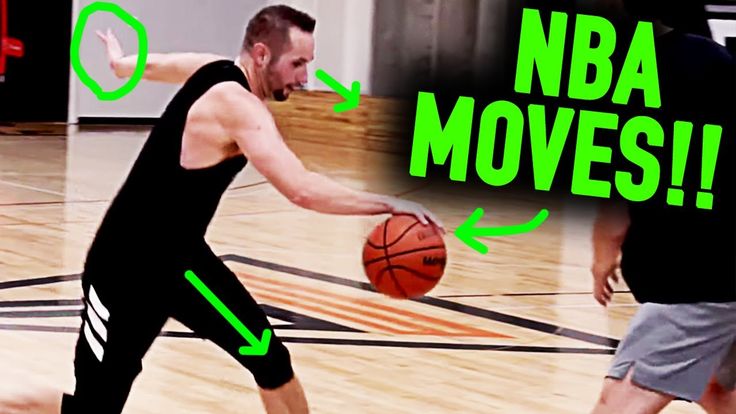 Your hand makes contact with the bottom of the ball, then turns the ball over while dribbling.
Your hand makes contact with the bottom of the ball, then turns the ball over while dribbling.
C. Court awarenessKnow where you are going to go and who is around you. The way you dribble the ball should change based on where other people on the court are. If you are in an open court (dribbling the ball down the floor with no defenders) you can dribble the ball in front of you. If a defender is close, you will want to protect the ball and dribble it to the side of your body so the defender cannot steal it. Good court awareness is also important to avoid dribbling into trouble. Look out for dribbling into double teams (two defenders), or into your own teammates.
D. Think aheadKnow what you are going to do with the basketball before you pick up your dribble. If you stop dribbling your options are to shoot or pass the ball. Remember once you stop dribbling you cannot start dribbling again.
E. Dribble with purposeReasons to dribble
To advance the ball up the court
To open up a passing lane, increased chance of pass completion and to help a teammate get open
To drive to the basket
To get open to shoot
To get out of trouble (defensive trap)
To run out the clock at the end of a game
Step 3: Advanced MovesHere are a few moves to practice to give you separation from your opponent on the basketball court. We will break these down in future tutorials.
We will break these down in future tutorials.
Crossover
Behind the back
Through the legs
Hesitation dribble
In-and-out dribble
Spin move
Trainer TipsStart with stationary drills and work your way up drills that include movement around the court
Improve the strength in your hands, squeeze a stress ball or tennis ball to give you greater control while dribbling
Dribble with two basketballs
Setup a dribbling obstacle course using cones or props from your garage
Practice both hands
Practice dribbling with a tennis ball
Implement only the moves you have mastered into a game
Have a friend or parent guard you when practicing
Don’t worry if you mess up, get out of your comfort zone by pushing hard to try new things
Check out more tips from Ultimate Hoops Trainers here.
Share your workout on social with hashtag #KeepPlaying
How to Dribble a Basketball (7-Step Guide + Drills)
Learning how to dribble a basketball is usually the very first skill a player will learn.
It’s easy enough to bounce the ball up and down while standing still…
But when a player’s trying to figure out how to:
- Keep their head up to see teammates.
- Move around the court.
- Protect the ball from the defense.
Then learning how to dribble a basketball can be intimidating.
But there’s good news…
Practicing your dribbling and ball-handling skills requires only two things:
- A basketball
- A small area to dribble.
You don’t need a basketball hoop, a teammate to pass you the ball, or a fancy basketball gym with perfectly polished hardwood floors.
In the steps below, I’ll teach you the best way to dribble a basketball and also give you several dribbling drills to practice as well.
Let’s get started…
How to Dribble a Basketball in 7 StepsStep #1 - Spread and Relax Your FingersThe first step in learning how to dribble a basketball is to relax your fingers and make sure they’re spread out evenly on the basketball.
Young kids have a tendency to keep their fingers together unless they’re taught otherwise.
Spreading your fingers out increases the surface area and gives the player more control.
The other issue is players making their hands and fingers too stiff…
Which results in players ‘slapping’ at the ball.
It’s important players get comfortable relaxing their hands and fingers.
Step #2 - Use Your Fingertips For ControlSome coaches and trainers tell their players the basketball should never touch the palm of their hand while they’re dribbling…
I disagree.
This results in a bunch of 5-year-olds making a claw shape with their hand, bouncing the ball with the top of their fingers, and then wondering why they can’t dribble.
The basketball SHOULD touch all of the pads on your hand…
But it’s the fingertips which control the basketball.
Step #3 - Get Your Body Down LowAll players should be bending their knees and staying low to the ground when they have possession of the ball.
There are several reasons for this, but the main benefit is…
Being low to the ground makes you explosive.
If your defender reaches in to steal the basketball, you’ll be able to immediately explode past your opponent and attack the rim.
Whereas if you were more upright, you’d first have to drop down before you could attack.
Step #4 - Pound the Basketball into the FloorPlayers need to push the basketball into the ground with force when they’re dribbling.
Do this by extending the elbow and snapping their wrist at the bottom of the movement.
The less time the basketball is out of your hands, the more control you have.
If a player bounces the basketball without much force, the ball can easily be tapped away by a defender because of the time extra time it isn’t in the offensive player’s hands.
Step #5 - Protect the Basketball From the Opponent Players have to make sure they’re protecting the basketball when dribbling.
There are several ways to do this:
1. Raise your non-dribbling arm for protection
This is known as an ‘arm bar’.
An arm bar will hold off a defender who’s attempting to close down the space and will also deter defenders from reaching in and attempting to steal the basketball.
But make sure to never push off with it.
2. Use your body to shield the ball
Turning your back / shoulder towards the on-ball defender will also provide protection.
Defenders will have a difficult time reaching all the way around the dribbler’s body and tapping the ball away without fouling them.
Step #6 - Keep Your Eyes Up to See the Floor When first learning how to dribble a basketball, it’s natural for players to look down at the ball when they’re practicing.
But as they improve, players need to be encourage to raise their eyes up and see the floor.
When in game situations, this will allow them to read the defenders and their teammates to make the right passing decisions.
Step #7 - Learn How to Dribble With Both Hands"I learned at a young age to dribble with both hands, and that allows me to be more creative when I go against bigger and stronger opponents" - Steve Nash
Have you ever coached against a player who can only attack the rim using their dominant hand?
They’re incredibly easy to stop.
All a defender needs to do is overplay their dominant hand and the offensive player will either have to pass the ball to a teammate or they’ll attempt to drive and lose the ball.
Which is why players must learn how to dribble equally well with both hands.
When a player can do this, their opportunities immediately double.
Step #8 - Dribble With a PurposeOne of my favorite dribbling quotes of all time comes from former Australian basketball coach, Lindsay Gaze…
"You dribble to score, not to explore. "
"
Mindless dribbling is something that’s becoming more and more common in today’s game.
Players are putting the ball on the floor as soon as they receive it without having a smart reason for doing so. This is often leading to them wasting the dribble.
On the Coaches Clipboard website, it’s written there are only six reasons to dribble.
1. To advance the ball up the court.
2. To drive to the hoop.
3. To get open for a shot.
4. To open up a passing lane, to have a better chance of completing a pass.
5. To get out of a trap.
6. To kill the clock at the end of a game.
3 Basketball Dribbling Drills1.
Up-and-Back DribblingHow the Drill Works:
A player dribbles a basketball up and back in a small area performing different dribbling moves. At home, this area could be the driveway. At the gym, this area would be the full or half court.
Purpose:
Learning the basics of how to dribble a basketball. This is a great way to introduce new dribbling movements to players without overwhelming them.
This is a great way to introduce new dribbling movements to players without overwhelming them.
Instructions:
1. Get one basketball and line up on the baseline.
2. Dribble the full length of the court practicing a specific dribbling move while trying to keep your head up to see the floor.
3. Each time you get to an end and turn around, switch up the move your practicing.
Dribble Moves:
Here are a few of the different dribbles I like to use with beginner players:
- Right Hand
- Left Hand
- Crossovers
- Behind the Back
- Through the Legs
- Dribble Low
- Dribble Backwards
- Walking
- Jogging
- Sprinting
Coaching Points:
• Do your best to keep your eyes and head up throughout the drills to see the floor.
• When performing the different dribbling moves, do your best to explode out of the move to practice getting past your opponent.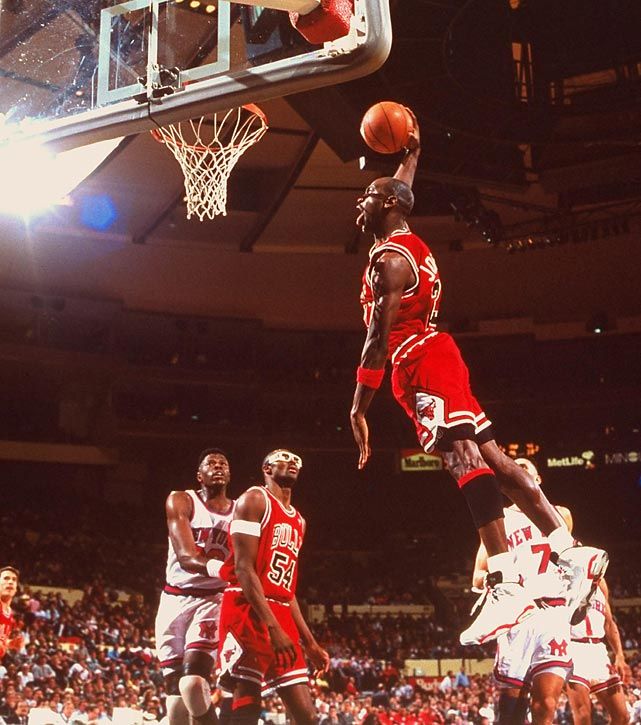
• Go slow in the beginning and focus on technique before adding speed.
2.
Balloon DribblingHow the Drill Works:
This drill involves keeping a balloon in the air while simultaneously dribbling a basketball. When the balloon hits the floor, the player loses their score and starts back at zero.
Purpose:
An incredibly fun drill designed to improve a player’s ability to control the basketball. The drill achieves this by forcing players to keep their eyes and focus on the balloon instead of the basketball.
Instructions:
1. Players begin by dribbling the basketball while holding a balloon.
2. When they’re ready, the player throws the balloon directly up into the air.
3. The player then continually taps the balloon into the air while keeping their dribble alive.
4. A player is out when they lose control of their basketball or their balloon hits the floor.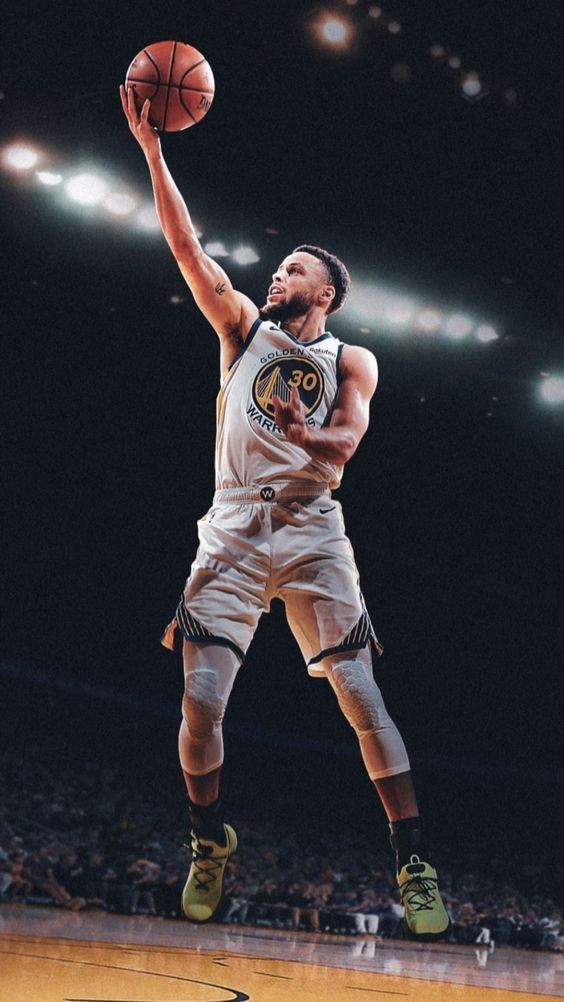
Variations:
Opposite Hand - Players are required to dribble the basketball in their non-dominant hand only.
Change Hands - Players must switch which hand they’re tapping the basketball with each time they keep the balloon alive.
Coaching Points:
• Ensure you’re in a low stance while maintaining the dribble. The closer the basketball is to the ground the easier it will be to control.
• Attempt to keep your eyes up and on the balloon at all times.
3.
Stationary Dribbling DrillsHow the Drill Works:
A player gets a basketball and finds a small, flat area where they can dribble. They then perform a series of one and two-ball ball-handling drills.
Purpose:
Players work on keeping their heads up while performing a variety of creative dribbling and ball-handling moves to improve their feel for the basketball
Instructions:
1. The player starts by setting up a small timer (phone, iPad, clock, etc) to track the time spent on each dribbling drill.
The player starts by setting up a small timer (phone, iPad, clock, etc) to track the time spent on each dribbling drill.
2. Each drill should last 15 - 30 seconds depending on the level of the players and which drill the players are doing.
3. The entire set should last approximately 5 minutes.
Dribble Moves:
Below I’ve listed several one-ball and two-ball dribbling drills to use.
If you’re looking for a bigger list, there are 50 dribbling moves here.
One Ball:
- Ball Slaps
- Finger Taps
- Wraps
- Pound Dribble
- Spider Dribble
- Crossover
- Through the Legs
- Behind the Back
- Figure 8
- Scissors
Two Ball:
- Double Pound
- High and Low
- Double Figure 8
- Double V
- Kills
Coaching Points:
• Attempt to keep your head and eyes up throughout the drill.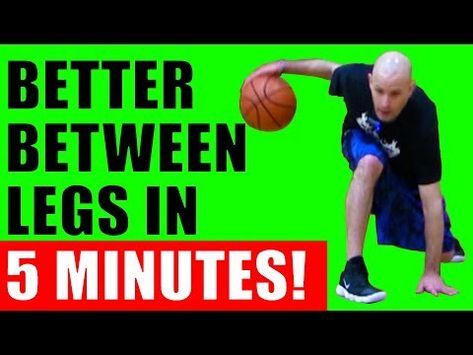
• Get out of your comfort zone by pushing hard for the entire duration of each drill. Don’t worry if you mess up once or twice, that means you’re extending yourself!
• Do these dribbling drills every day!
Conclusion:Learning how to dribble a basketball at an advanced level can give you a huge advantage over the opposition and teammates you’re battling with for playing time.
If used correctly, dribbling will allow you to get to any spot on the floor.
This can set both you and your teammates up for high-percentage shots.
Leading to more points score, more wins on the scoreboard, and more fun during games.
So, get out there and improve your dribbling skills!
Dribbling | Playing technique
From Pivot's notebook
1. Don't be careless when making passes.
2. Pass quickly.
3. Be decisive when passing.
4. When releasing the ball, control it with your fingertips.
5. Before passing, distract the defender with your head and eyes.
Before passing, distract the defender with your head and eyes.
One of the basics of basketball is the ability to securely control the ball. Now, starting to learn the dribbling, it's time to get acquainted with another important skill - the ability to control the movements of your body when in possession of the ball.
A dribbler or dribbler will only be able to keep the ball and beat the defense if he is constantly in a position of balance and has the opportunity to control his movements (diagram 41).
Guidance is achieved by movements of the forearm, hand and fingers. In the starting position, lean forward slightly, relax your knees, keep your forearm parallel to the floor and completely relax your arm. From this position, raise the forearm 10-15 cm up, keeping the fingers and hand relaxed, then lower it 30 cm. Keep the shoulder motionless, acting only with the forearm in the elbow joint with relaxed fingers and hand (Fig. 42).
The dribbling of the hand should not be like slapping the ball, but rather like pushing down with relaxed fingers. Practice these pushes until you can perform them smoothly and rhythmically with either hand. Then, using the same relaxed motion, start hitting the ball to the floor (fig. 43). Don't slap the ball, just push it down and then lift your hand up with the ball. After the push, keep your hand down, waiting for the ball to bounce. Then raise your hand up with him.
Practice these pushes until you can perform them smoothly and rhythmically with either hand. Then, using the same relaxed motion, start hitting the ball to the floor (fig. 43). Don't slap the ball, just push it down and then lift your hand up with the ball. After the push, keep your hand down, waiting for the ball to bounce. Then raise your hand up with him.
Now push the ball down again. During the movement of the forearm up and down, the fingers should constantly control the ball - this will allow better control of the ball during the dribbling.
Try the same with the other hand and practice until you can freely dribble the ball with either hand without looking at it. You need to look at the floor a few meters in front of you.
Once you have mastered the dribbling on the spot, start moving forward while continuing to dribble. Try not to look at him. If you look at the ball, you will not be able to see what other players are doing at that time. Walk first.
Remember: to move forward, you need to push the ball slightly forward, and not down, as when dribbling on the spot (fig.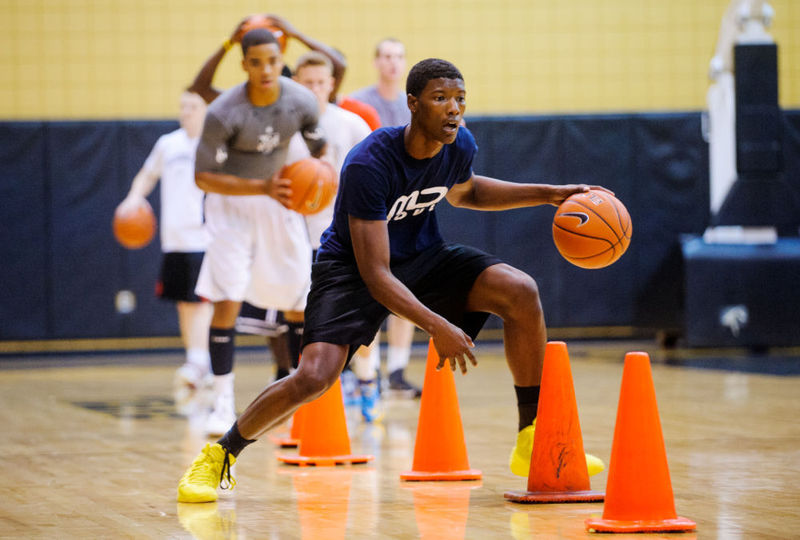 44). When you learn to dribble the ball without visual control while moving slowly forward, transfer it to the other hand and continue to practice dribble with the other hand. Don't try to switch to fast dribbling until the movements of the legs and arms become free and natural.
44). When you learn to dribble the ball without visual control while moving slowly forward, transfer it to the other hand and continue to practice dribble with the other hand. Don't try to switch to fast dribbling until the movements of the legs and arms become free and natural.
It is quite obvious that while you are in a high stance, the ball is relatively unprotected. The defender will be able to easily hit the ball making a long journey from your hand to the floor (fig. 45). To prevent this, bend your knees, reducing the distance between your hand and the floor. Try this stance without the ball first. It is somewhat reminiscent of a sprinter's stance at the start. Move in a low stance.
Then, keeping a low position, proceed to dribble. Now you need to be especially careful in choosing the distance between you and the ball (fig. 46).
If you dribble too close, there is a danger that you will hit your knee and lose it. Conversely, if you push the ball too far, it will be difficult to keep control of it while dribbling.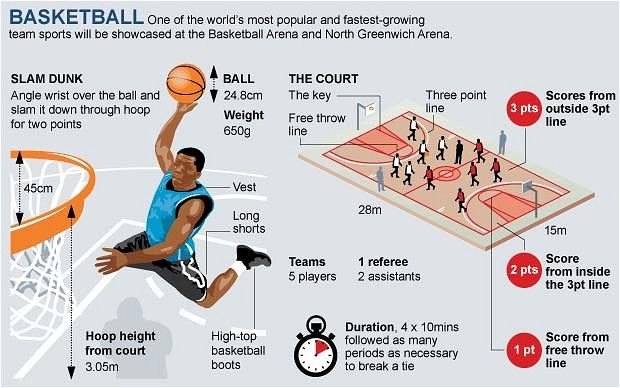 During training, you will find the best distance between you and the ball when moving at any speed and in any stance.
During training, you will find the best distance between you and the ball when moving at any speed and in any stance.
When you master the low dribble and start to increase your speed, you will have to move up to the high stance again. But at the slightest threat from the opponent, you need to switch to low dribble.
Figure 47 shows how to cover the ball while dribbling. The lower the dribble, the more difficult it is for the opponent to take the ball away.
Keep both hands in front of you while dribbling. You may find it more comfortable to lower your free hand down. However, it is better to keep it ahead. This is necessary in order to close the ball from the opponent (Fig. 48).
When dribbling, as well as when passing, the ability to see the court is the most valuable quality. A raised head will allow you to follow the actions of a partner and an opponent. However, remember that if each time you look in the direction where you are going to start the dribbling, then the opponent will be able to easily figure out your plan. If you keep your gaze on the floor in front of you so that it passes over the wrist of the dominant hand, you can follow your partners without looking at them, and your opponent will never guess your next move.
If you keep your gaze on the floor in front of you so that it passes over the wrist of the dominant hand, you can follow your partners without looking at them, and your opponent will never guess your next move.
Dribbling is one of the most important techniques that every basketball player should master.
- Dribbling exercises
- Scientifically
- Olympic champion Nadezhda Zakharova shares her experience
- Olympic champion Mikhail Korkiya shares his experience
The basic rules of dribbling in basketball: briefly and clearly
In modern basketball, dribbling and dribbling are the main principles of moving around the field. The player cannot take the ball in his hands and run to the ring. This will be considered a violation. And what other nuances of dribbling and dribbling exist? It turns out that you can’t put your other hand forward and take more than two steps with the ball.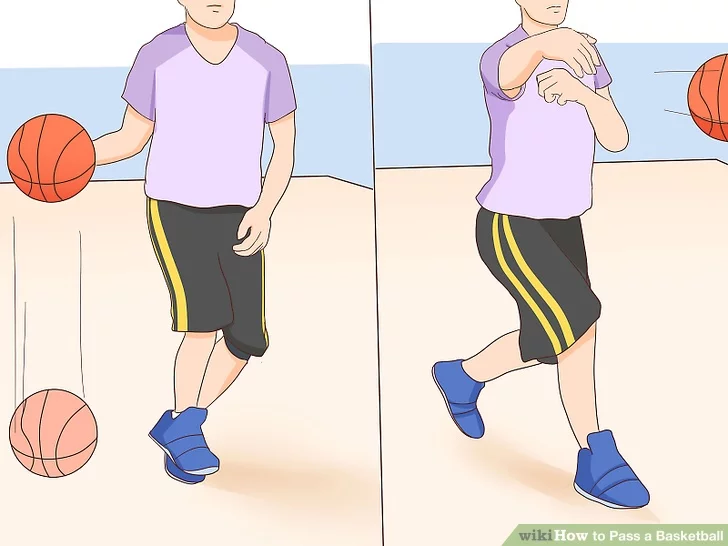 But it was not always so.
But it was not always so.
In the early to mid-20th century, basketball was more like rugby with hanging hoops. Players often pushed, abused mass and strength, played for time. In 1954, the rules were updated, and the game became much stricter about various physical contacts. Now the players had to learn to dribble and not to fight with the opponent. Basketball has become more beautiful and spectacular.
Definitions
Dribbling is the way a basketball player moves around the court. Only with the help of this technique is it possible for the player to move independently. Otherwise, dribbling can be called dribbling. But this definition is more often used when it comes to beating opponents, outplaying them in a one-on-one fight. Now good dribbling has become an integral part of any basketball game.
Despite the high demands placed on players by coaches, almost no one succeeds in turning the ball into their forte. The fact is that basketball is a very fast game in which a big bet is placed on team play. If a player thinks that he will be able to pass 5 opponents using dribbling, then in just a few seconds he will be disappointed. In the NBA, goals in which only one athlete took part are a rarity.
If a player thinks that he will be able to pass 5 opponents using dribbling, then in just a few seconds he will be disappointed. In the NBA, goals in which only one athlete took part are a rarity.
Dribbling technique
To get out of pressure, you need to learn good dribbling technique. It is worth saying that there are several ways of dribbling:
- One hand. The most common way. There is a ball chasing on the ground with one hand, and the second can control the balance of the body. This is the most energy-saving and quiet way to drive.
- Two hands alternately. Also a common technique. It should be mastered by all those who want to increase their level of play to professional players. By changing two hands, you can confuse the enemy, as well as find a more profitable option for an attack.
- Translations. These are hard hits on the floor that lift the ball up to shoulder level with the dribbler.
 In this way, you can swing the enemy and pass into the open space.
In this way, you can swing the enemy and pass into the open space. - Crossover. The essence of this technique is chasing the ball between the legs. One blow in front of you, and the second - already behind your back. This helps protect the ball from the opponent and does not give him the initiative in the fight.
- Behind the back. This method is rarely used in the real game. Most often it is used to warm up or tease an opponent.
There is approximately one technique for all these methods. Basketball players learn the rules of dribbling for a reason. This is necessary in order to better control the ball and not get injured during an incorrect reception. There are the following rules and tips for dribbling:
- The ball must bounce off the field and bounce off the fingers. No need to grab it with a full palm or try to hit the floor as hard as possible. The main thing is that a little effort is spent on dribbling, and the player’s hands do not get tired.

- Get close to the ground and dribble the ball without letting it go too far. In this position, the opponent will have less time to snatch the ball. It is better to change the style of dribbling, sometimes rising to his full height, and sometimes crouching to the ground.
- Need to unlearn looking at the ball while dribbling. It is advisable to dribble the ball without looking at all. In this way, it will be possible to follow the movements of the opponent, concentrating on the situation in the match.
- It is worth learning how to cover the ball with the body, preventing a player from the enemy team from reaching it. This is quite difficult to achieve, as blind dribbling means that the athlete will blindly control the ball without hitting it against other parts of the body.
- Take into account the angle of the rebound of the ball is also worth with active dribbling. If you stand and mint at an angle of 90 degrees, then there will be no progress. If the angle is too large, then the ball may not be in time, and if it is too small, then the progress will be too slow.
 Dribbling is very important to professional basketball players as it is the second most important aspect of moving around the field (passing is the first).
Dribbling is very important to professional basketball players as it is the second most important aspect of moving around the field (passing is the first).
Double dribble
This is the name given to the violation when a player starts dribbling again after taking the ball in his hands. This is prohibited by the rules. If an athlete receives the ball from a partner, then he can take the ball with both hands and start dribbling, but only once. Let's say the player stopped dribbling. He takes the ball in his hands and begins to look around the court. Now he has only two options:
- Pass to a teammate.
- Throw into the ring.
All this can be done after two steps with the ball. It will not count as a run. It is worth saying that jumping with the ball in this situation is prohibited. In case of violation of the rules, the player will be declared out of bounds, and possession will be transferred to the other team.
Common Mistakes
Leading is a difficult technique that takes a lot of time and effort to master. But to increase the value for the team, you can study the most common mistakes:
But to increase the value for the team, you can study the most common mistakes:
- Individualist. If you get carried away with dribbling, it will be difficult to achieve a result. Basketball is a team game where passing is more important than dribbling. You need to look at partners more often and see good moments: both for driving and for assists.
- Flirting. Of course, all professional players have excellent ball possession, so they can afford some tricks and tricks right next to the opponent. Ordinary players will not benefit from such “tricks”. It is better to always control the ball, because underestimating the opponent is the main mistake of basketball.
- Push the opponent away. Don't pay too much attention to the opposing team while dribbling. If a player starts to make close contact, then there is a high probability of earning a foul or losing the ball. It is better to go around the opponent or look for an opportunity to pass.
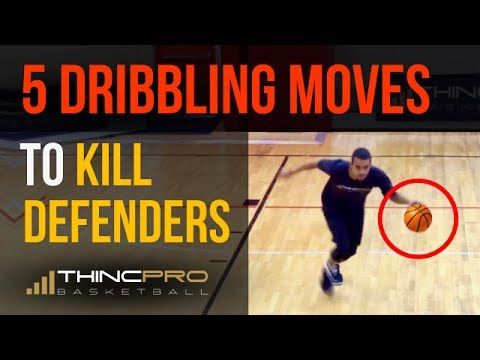
- Do not exercise. Some players think that possession will develop during the game, but this is a strong misconception. Like any other technique, dribbling requires attention and diligence. You need to devote a lot of time to this in order to progress and feel more comfortable during the match.
- Prefer dribbling over shooting. Let's say that the player is at the border of the "paint", but he decides to come close to the ring and dunk. This decision may result in a loss of the ball or a foul in the 3-second zone. If there is an opportunity to shoot from close range, then it is always worth doing it, and not switching to dribbling.
Practice Drills
To learn how to dribble well, you need to practice more. The following exercises will help with this:0005
- Hold the ball in your hand, drop it down in a smooth motion and hit the ground. Only one hand works. This will help develop wrist strength.

- One player picks up the ball, and the second grabs it in a way that suits them. Now task number two is to try to get the projectile out. The first player must tense all the muscles to prevent the ball from popping out. Develops strong hands.
- Long dribbling. Everything is clear here. You need to go into dribbling and mint the ball for 3, 5, 10 minutes. After the noticeable wobble disappears, and the athlete has a better feel for the car, control over the ball will begin to feel better.
- Dribbling the ball between the legs with a crossover will also help you better feel the speed and angle of the ball. This exercise can improve not only control, but also dribbling skills close to the opponent.
- Alternately dribbling the ball first with one hand and then with the other will also help you feel the game better. A player who knows how to control with both hands will always feel confident on the court.
Important nuances in the game
Keep in mind that successful dribbling requires strong and powerful hands.